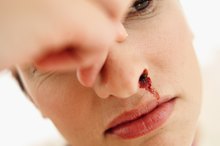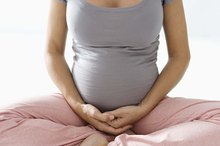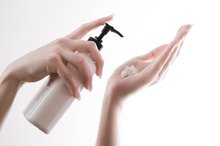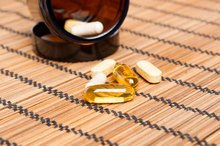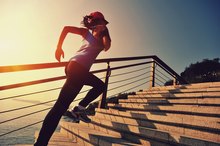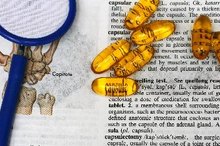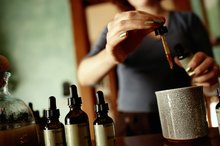What does fact checked mean?
At Healthfully, we strive to deliver objective content that is accurate and up-to-date. Our team periodically reviews articles in order to ensure content quality. The sources cited below consist of evidence from peer-reviewed journals, prominent medical organizations, academic associations, and government data.
The information contained on this site is for informational purposes only, and should not be used as a substitute for the advice of a professional health care provider. Please check with the appropriate physician regarding health questions and concerns. Although we strive to deliver accurate and up-to-date information, no guarantee to that effect is made.
Is it Normal to Bleed When You Exercise?
The benefits of exercise are well-documented. Weight control, heart health and improved lung capacity are among the countless positive effects that far outweigh any negative effects associated with vigorous exercise. However, various types of bleeding can occur while exercising, especially during endurance workouts.
Skin Chafing
Chafing occurs when your clothing or other equipment rubs against your skin. Your skin becomes dry, then irritated, and then starts to crack and bleed. If you have run a long-distance race and noticed runners, especially men, come across the finish line with blood stains on their shirts, it is usually from the chafing of unprotected nipples 1. Chafing can happen anywhere, but generally affects inner thighs, upper arms and anywhere a seam exists on your clothing. Avoid chafing by selecting appropriate clothing for your sport, which may include compression shorts or tights, or technical clothing that fits correctly. Avoid any rough materials and try out your clothing during practice before committing to wearing it for a longer event. Applying a lubricant such as petroleum jelly or other sport-specific glide product to high-risk areas will further reduce the risk of chafing. If you become chafed, treat the area as you would an open wound, keeping it clean, dry, and covered with a sterile piece of gauze.
- Chafing occurs when your clothing or other equipment rubs against your skin.
- Chafing can happen anywhere, but generally affects inner thighs, upper arms and anywhere a seam exists on your clothing.
Vaginal Bleeding
Menopause & Nosebleeds
Learn More
Women who experience light bleeding during high-intensity exercise should first make certain that they are not pregnant because spotting is a common side-effect of pregnancy. Assuming you are not pregnant, you might want to take light bleeding during exercise as a sign that you are stressing your body too harshly. It is common for your period to lighten or become less frequent during high-intensity training, but bleeding may be a sign you are doing too much. Some women do experience spotting during ovulation, but if this is not a normal occurrence for you, ease back on your workouts until the spotting goes away.
- Women who experience light bleeding during high-intensity exercise should first make certain that they are not pregnant because spotting is a common side-effect of pregnancy.
- Some women do experience spotting during ovulation, but if this is not a normal occurrence for you, ease back on your workouts until the spotting goes away.
Rectal Bleeding
Hemorrhoids and fissures are common causes of rectal bleeding in endurance athletes. These issues particularly affect beginner athletes whose bodies are not yet accustomed to the increased amount of friction and sweat their bodies produce during a workout. Another cause is a condition known as ischemia, in which blood flow is decreased to certain areas of the colon during workouts. Dr. Cathy Fieseler suggests in Running Times Magazine that you avoid ibuprofen and aspirin for pain associated with rectal bleeding because both of those medications promote bleeding and are therefore counterproductive. She states, "as the longer workouts become routine, this problem should resolve."
- Hemorrhoids and fissures are common causes of rectal bleeding in endurance athletes.
- Dr. Cathy Fieseler suggests in Running Times Magazine that you avoid ibuprofen and aspirin for pain associated with rectal bleeding because both of those medications promote bleeding and are therefore counterproductive.
Exercise-Induced Nosebleeds
Nosebleeds During Exercise
Learn More
During exercise, you blood pressure rises. This rise in blood pressure can cause blood vessels in your nose to burst. Nosebleeds more frequently strike individuals who exercise in cold, dry weather. If your nose bleeds, stop your workout and tilt your head forward. Compress the end of your nose until the bleeding stops. Because exercise-induced nosebleeds are associated with certain types of medication, such as warfarin, consult with your doctor if you experience bleeding while taking a prescription medication.
- During exercise, you blood pressure rises.
- Because exercise-induced nosebleeds are associated with certain types of medication, such as warfarin, consult with your doctor if you experience bleeding while taking a prescription medication.
Cautions and Considerations
If you have prolonged, heavy or unusual bleeding, see your doctor immediately. Stay vigilant for signs of shock along with bleeding, which include shallow breathing, dizziness and confusion. Before using over-the-counter medications to treat bleeding, read the instructions carefully or ask your doctor. Hydration is key in minimizing many exercise-related bleeding occurrences, so drink plenty of water throughout your training program.
- If you have prolonged, heavy or unusual bleeding, see your doctor immediately.
- Before using over-the-counter medications to treat bleeding, read the instructions carefully or ask your doctor.
Related Articles
References
- Time To Run: Dealing with Chafing -- Cause and Prevention
- MedlinePlus: Shock
- 100 Questions and Answers About Your Sports Injury; Thomas M. Howard, et al.
- Exercise Prescription: Physiological Foundations; Kate Woolf-May
- Middle School Physical Education, Volume 2; Gary B. Spindt
- Woo KY, Beeckman D, Chakravarthy D. Management of Moisture-Associated Skin Damage: A Scoping Review. Adv Skin Wound Care. 2017;30(11):494–501. doi:10.1097/01.ASW.0000525627.54569.da
- Emer J, Sivek R, Marciniak B. Sports Dermatology: Part 1 of 2 Traumatic or Mechanical Injuries, Inflammatory Conditions, and Exacerbations of Pre-existing Conditions. J Clin Aesthet Dermatol. 2015;8(4):31–43.
- Aneja S & Taylor JS. Skin Disorders in Athletes: Professional and Recreational Sports. In: Eds. Rustemeyer T, Elsner P, John SM, Maibach HI. Kanerva's Occupational Dermatology. doi:10.1007/978-3-642-02035-3_186
- Karageorgi S, Gates MA, Hankinson SE, De vivo I. Perineal use of talcum powder and endometrial cancer risk. Cancer Epidemiol Biomarkers Prev. 2010;19(5):1269-75. doi:10.1158/1055-9965.EPI-09-1221
- Nobles T, Miller RA. Intertrigo. In: StatPearls [Internet]. Updated October 27, 2018.
- Chafing. MedlinePlus.
- Talcum Powder and Cancer. American Cancer Society.
- Dhar AD. Overview of Bacterial Skin Infections. Merck Manual.
- Helm MF, N. Helm T, F. Bergfeld W. Skin problems in the long-distance runner 2500 years after the battle of marathon. International Journal of Dermatology. 2012;51(3):263–270. doi:10.1111/j.1365-4632.2011.05183.x.
Writer Bio
Andi Whaley began her professional writing career in April 2010. She is a frequent contributor to multiple websites including LIVESTRONG.COM and eHow. She is a certified Road Runners Club of America running coach, a black belt martial arts instructor and holds a Bachelor of Fine Arts from New York University.

